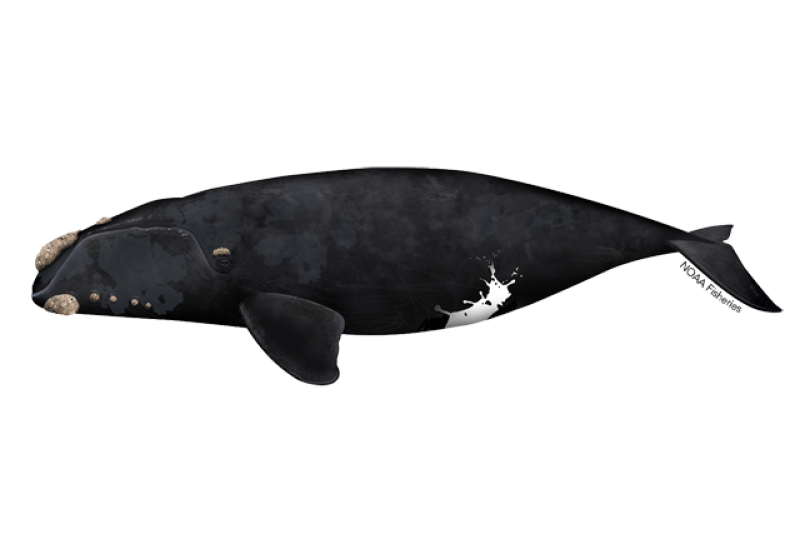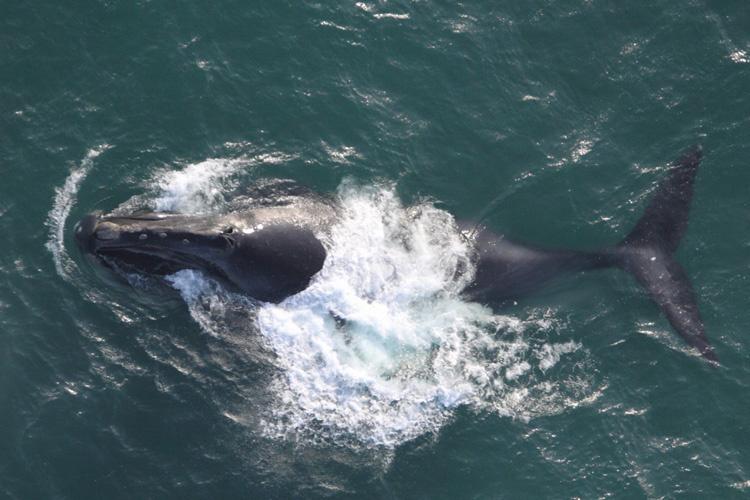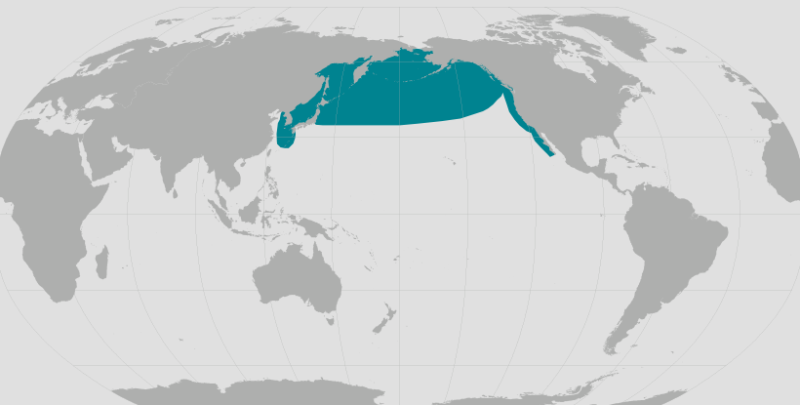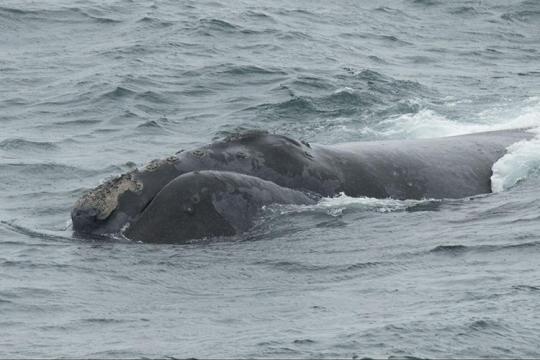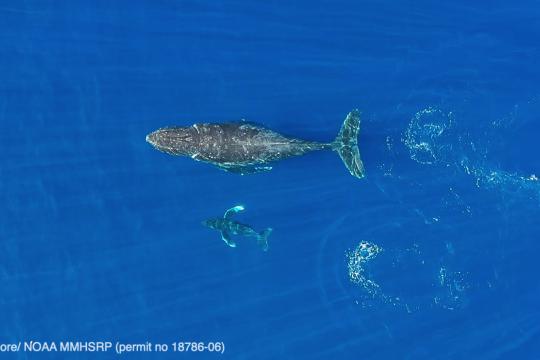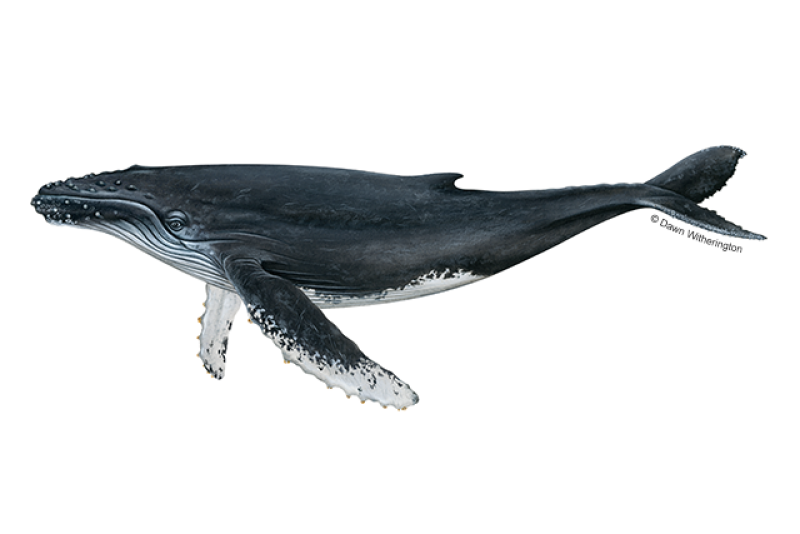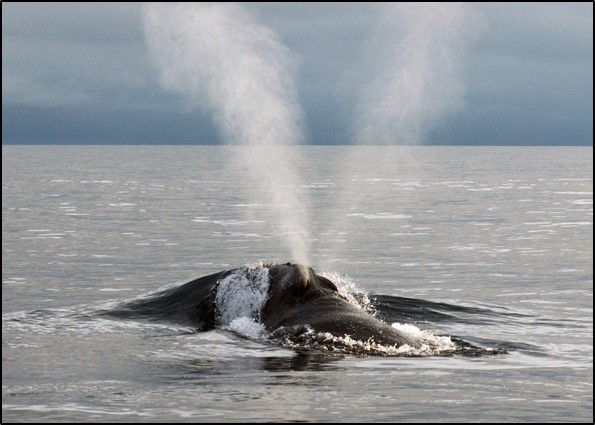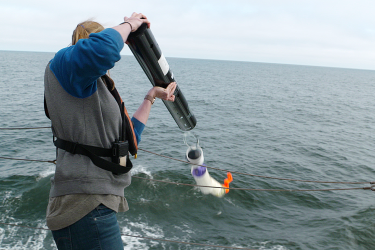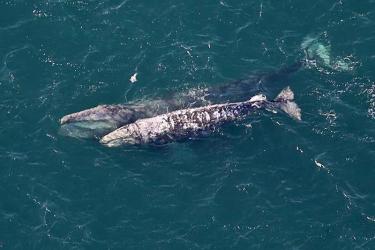Eastern and Western Populations
North Pacific right whales are considered to exist in two populations based on geographic distribution: eastern and western North Pacific. The range of eastern North Pacific right whales is believed to encompass the Gulf of Alaska and the Bering Sea, while the western population ranges from near the Commander Islands, the coast of Kamchatka, along the Kuril Islands and in the Sea of Okhotsk.
There are few reliable estimates of the current number of North Pacific right whales, but it is thought to be in the low 100s. There may have been as many as 37,000 North Pacific right whales before commercial whaling drastically reduced populations in the 19th century.
Eastern Population
The eastern population of North Pacific right whales is one of the smallest large whale populations in U.S. waters. The eastern population may only have only 30 animals. After being hunted extensively in the nineteenth century, they were protected by international treaties in the 1930s and 1940s. Despite these protections, illegal Soviet whaling in U.S. waters during the 1960s decimated the already reduced population, and there have been no signs of recovery since. In fact, for many years, the whales were so rarely seen that sightings of individuals warranted publication.
Since 1996, North Pacific right whales have been found repeatedly in or near their Critical Habitat, a small area of the southeastern Bering Sea. Even though there have been substantial research efforts in this area in certain years, the entire photographic identification catalog of Bering Sea right whales (as of 2017) only includes 23 individuals, and the genetics archive contains only 21 individuals.
The population in the Bering Sea is thought to number only about 28 whales, with 20 males and eight females. The small number of females is of great concern, and relatively few calves and juveniles have been seen in the last few decades (one in 2002, two in 2004, and one in 2017). Even fewer whales have been seen in the Gulf of Alaska, with only a few individuals ever identified (in 2005, 2006, 2013, and 2017). During recent ship surveys in the Gulf of Alaska in 2009 and 2013, no right whales were seen, but at least three individuals were detected acoustically.
Dedicated aerial surveys, ship surveys, and satellite tagging research on North Pacific right whales in the Bering Sea have not been conducted since 2010 due to a lack of funding. The only current field research on North Pacific right whales consists of several acoustic recorders in the Bering Sea that can detect their occurrence.
Western Population
The area inhabited by North Pacific right whales from the western stock includes Russian and Japanese territorial and exclusive economic zone waters and some international waters, even in the center of the Sea of Okhotsk. As a result, surveys for whales have generally not been comprehensive. Therefore, information on distribution and abundance from the western stock is limited, and its status is currently unknown.
The only existing estimate of the western North Pacific right whale population comes from three Japanese minke whale sighting surveys in the Sea of Okhotsk conducted between 1989 and 1992. This estimate was 922 animals; however, biases were identified in the survey methodology, and the estimate should be considered unreliable given its low precision. The population estimate for the western stock is likely in the low hundreds.
In the western North Pacific, recent sightings of right whales have been reported. These include five observations of a total of ten animals in June 2012 in offshore waters some 290 miles southeast of Kamchatka, together with a pair of whales recorded in June 2013 east of the Kuril Islands. A breaching right whale was observed during a sightseeing cruise off the Shiretoko Peninsula of Japan in July 2013 making it the first confirmed sighting in the area for several decades and the first recorded in Hokkaido. In February 2015, a young right whale was found entangled in aquaculture gear at Namhae, South Korea and successfully released, making it the first record of this species in the Sea of Japan in 41 years. In October 2016, an entangled right whale was reported to have died while being disentangled in Volcano Bay, Hokkaido, Japan.
